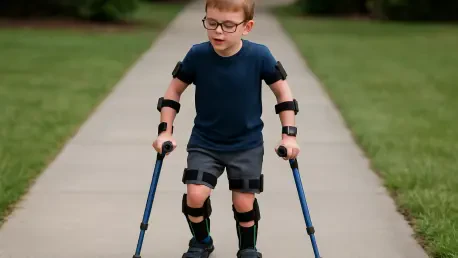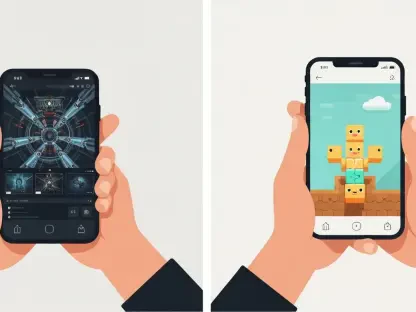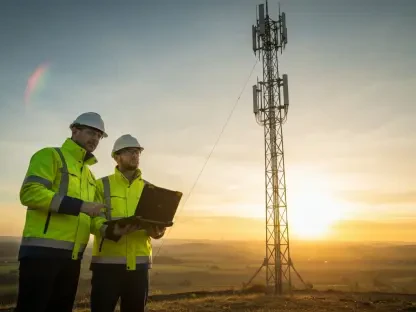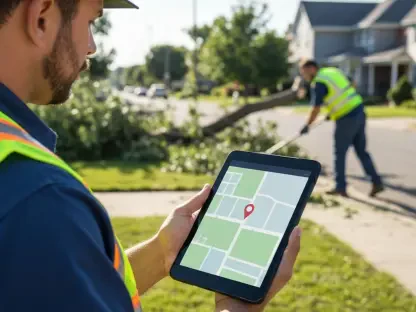Imagine a world where a tiny, lightweight device strapped to an infant’s ankle could reveal critical health insights months before traditional methods even hint at a problem, transforming the landscape of pediatric diagnostics. This isn’t science fiction but the reality of cutting-edge research into early detection of cerebral palsy (CP), a condition affecting movement and posture that often goes undiagnosed until a child is well into their toddler years. A groundbreaking study led by experts from Children’s Hospital Los Angeles, in partnership with other leading institutions, has explored how wearable motion sensors can identify signs of CP in babies as young as 1 month old. This innovative approach promises to revolutionize pediatric diagnostics by offering continuous, objective data on infant movement patterns. By catching warning signs far earlier than conventional tools, this technology could pave the way for timely interventions, potentially altering the developmental trajectory for at-risk children and easing the burden on families.
Revolutionizing Early Detection with Wearable Tech
The potential of wearable sensors to transform how CP is diagnosed cannot be overstated. Unlike traditional methods such as brain imaging or the General Movement Assessment, which often rely on subjective observations during short clinical visits, these sensors provide a detailed, real-time analysis of an infant’s leg movements in their natural environment. A recent study tracked 60 infants with early brain injuries—a significant risk factor for CP—starting at just 4 weeks of age. Each baby wore lightweight sensors on both ankles for two full days each month until reaching 4 months. The data revealed striking differences: infants later identified as high risk for CP moved their legs less frequently, averaging 220 movements per hour while awake compared to 348 in the lower-risk group, and for shorter durations. These disparities remained consistent over the study period, underscoring the sensors’ ability to detect subtle yet critical variations in movement patterns long before other diagnostic tools.
This technological advancement addresses a key limitation of current practices by offering a fuller picture of an infant’s behavior over extended periods. Traditional assessments often capture only a snapshot of movement during a brief clinic visit, which may not reflect typical activity levels or patterns. In contrast, wearable sensors collect continuous data, allowing clinicians to analyze frequency, duration, and quality of movements in a home setting where infants feel most comfortable. This objectivity reduces the risk of human error or bias inherent in observational methods. Moreover, the early identification of at-risk infants—sometimes as early as 1 or 2 months—creates a window of opportunity for interventions that could mitigate the severity of CP. The implications are profound, as earlier diagnosis means families and healthcare providers can prepare and act sooner, potentially improving long-term motor and cognitive outcomes for these children through tailored therapeutic strategies.
The Power of Early Intervention
Early intervention stands as a cornerstone for improving outcomes in children at risk for CP, and wearable sensors could be the key to unlocking this potential. Experts leading the study emphasize that identifying high-risk infants within the first couple of months using objective data allows for precision therapies to be implemented much sooner than with traditional diagnostics. Therapies for CP often demand significant commitment from families, including frequent clinic visits and intensive programs that can span years. By pinpointing which infants are most likely to benefit from such interventions, wearable technology helps optimize resources and ensures that efforts are directed where they are most needed. This personalized approach not only enhances the effectiveness of treatment but also reduces unnecessary stress on families of lower-risk children who may not require aggressive early therapy.
Beyond just detection, the data from wearable sensors offers a pathway to customize care plans based on individual movement profiles. For instance, infants showing reduced leg activity could be prioritized for specific exercises or mobility-enhancing programs designed to stimulate development. The study’s findings suggest that such early, targeted actions could make a significant difference in developmental milestones. Additionally, the ability to monitor progress continuously through sensor data means that adjustments to therapy can be made in real time, adapting to the child’s evolving needs. This dynamic approach contrasts sharply with the static, often delayed feedback from conventional methods, where reassessments might occur only after months. As research progresses, the hope is that these sensors will not only identify risk but also predict how infants might respond to various interventions, further refining the journey from diagnosis to treatment in pediatric neurodevelopmental care.
Future Horizons in Pediatric Care
Looking ahead, the research team behind this wearable sensor study is focused on integrating their findings with advanced therapeutic solutions to enhance outcomes for at-risk infants. One promising direction involves advancing high-risk infants into robotics-supported therapy, which could bolster mobility and support developmental progress from an early age. The goal is to determine whether early sensor data can predict how well a child might respond to specific treatments, thereby tailoring interventions with even greater precision. This emphasis on personalized medicine reflects a broader trend in healthcare, where technology is increasingly leveraged to improve diagnostic accuracy and therapeutic effectiveness, particularly in complex conditions like CP that require nuanced, individualized approaches to care.
The shift from subjective observation to data-driven insights also highlights a transformative moment in pediatric neurology. Wearable sensors offer a level of detail and consistency that traditional tools simply cannot match, addressing long-standing challenges in capturing an infant’s typical movement patterns. While the promise of this technology is immense, practical hurdles remain, such as ensuring accessibility and managing the intensive therapies that often follow early diagnosis. Nevertheless, the narrative emerging from this research is one of optimism and innovation. By providing clinicians and families with a powerful tool to intervene early, wearable sensors could fundamentally change how CP is managed, offering hope for better futures. Reflecting on the strides made, it’s clear that this work lays a foundation for a new era in early detection and care, with the ultimate aim of delivering the right support to the right child at the most critical time.









